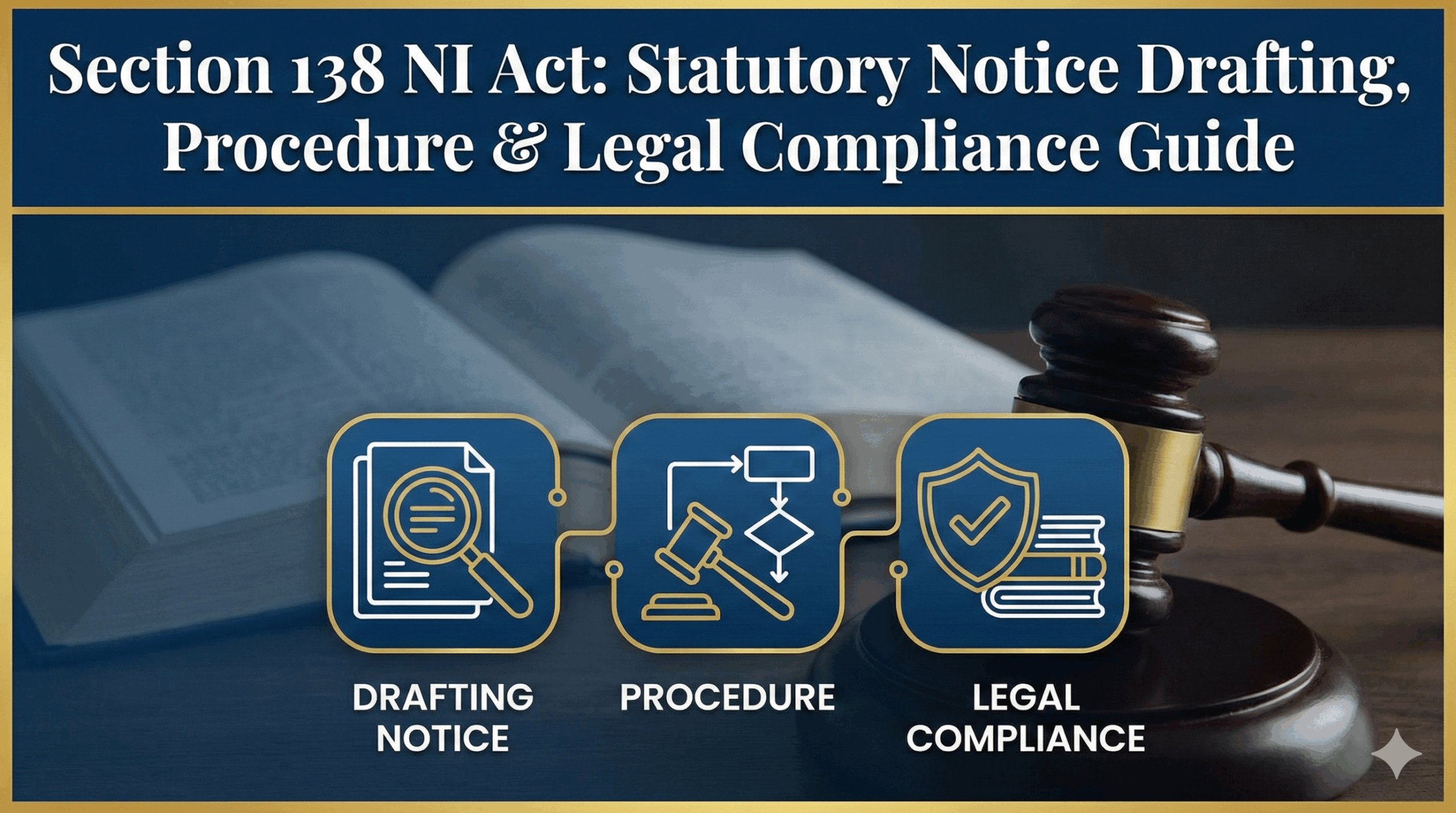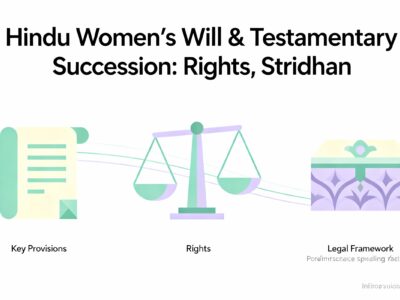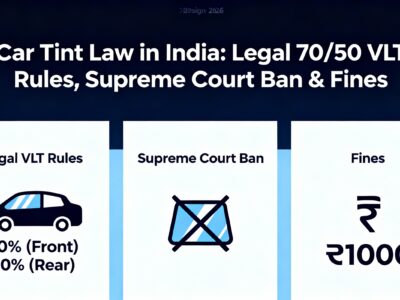Can a child born from a live-in relationship in India claim a share in their father’s ancestral property? This question, once a legal grey area, is now at the forefront of Indian family law.
As society evolves, the Supreme Court has delivered a series of landmark judgments that grant legitimacy and inheritance rights to children outside the confines of traditional marriage.
However, the path to claiming these rights remains complex, fraught with distinctions between self-acquired and ancestral property, and a patchwork of legal interpretations.
This comprehensive guide deciphers the current legal landscape, breaking down the latest court rulings, the rights of both children and partners, and the ongoing debate for legislative reform in 2025.
The Legal Labyrinth
Inheritance Rights of Children from Live-in Relationships
A deep dive into the evolving legal landscape in India, where judicial activism confronts traditional laws to secure the rights of children born outside formal marriage.
The Indian judiciary has embarked on a remarkable journey, transforming the legal status of live-in relationships from a social taboo to a constitutionally protected choice. This evolution, however, has created a complex and often confusing legal framework, especially concerning the inheritance rights of children. This article untangles this legal web, exploring key judgments, statutory provisions, and the path forward.
From Taboo to Recognition: The Legal Evolution
For decades, Indian law, reflecting societal norms, only recognized marriage as the legitimate foundation for a family. However, the Supreme Court, through a liberal interpretation of Article 21 (Right to Life and Personal Liberty), has progressively shielded consensual adult relationships from legal persecution.
Timeline of Judicial Recognition
Lata Singh v. State of U.P. (2006)
Laid the groundwork for protecting consensual adult relationships from harassment, setting a precedent for individual autonomy.
S. Khushboo v. Kanniammal (2010)
Unequivocally held that a live-in relationship is not an offense. The court distinguished law from morality, decriminalizing cohabitation.
D. Velusamy & Indra Sarma Cases (2010, 2013)
Introduced the concept of a "relationship in the nature of marriage" to determine eligibility for legal protections like maintenance and against domestic violence.
Uttarakhand UCC (2024)
The first legislative attempt to regulate live-in relationships through mandatory registration, sparking a debate on privacy vs. protection.
What is a "Relationship in the Nature of Marriage"?
Not all live-in relationships are equal in the eyes of the law. To access rights like maintenance or protection under the Domestic Violence Act, a relationship must meet stringent criteria. The Supreme Court laid down these indicative guidelines:
Duration & Shared Household
Must be a significant period of cohabitation in a shared home, not a "walk-in and walk-out" affair.
Financial & Domestic Arrangements
Pooling of resources, joint accounts, and running a household together are key indicators.
Public Appearance & Intention
Presenting themselves to society as spouses and intending the relationship to be long-term.
Children & Sexual Relationship
The presence of children is a strong indicator of commitment, alongside a stable sexual relationship.
The Child is Innocent: Securing Legitimacy & Rights
The judiciary's most consistent stance has been to protect the child. The principle is clear: there are no "illegitimate children," only "illegitimate parents." Courts have used two primary tools to ensure this.
- Presumption of Marriage (Sec 114, Evidence Act): If a couple lives together for a long time, the law presumes they are married. The burden of proof is on the person who claims they are not. This has been a powerful tool to grant legitimacy to children.
- Legal Fiction of Legitimacy (Sec 16, Hindu Marriage Act): This section declares children from void or voidable marriages to be legitimate. Courts have extended this protection to children from long-term live-in relationships, ensuring they are not penalized for their parents' status.
"The law leans in favour of legitimacy and is loath to declare a child to be illegitimate. The onus is on the party who claims illegitimacy to prove it."
Consequently, rights to maintenance and custody for such children are absolute and secured under secular laws like Section 125 of the CrPC and personal laws like the Hindu Adoptions and Maintenance Act.
The Partner's Predicament: Rights & Liabilities
While the law has been steadfast in protecting children, the rights of the cohabiting partners themselves are far more limited and conditional. A surviving partner has no automatic right to inherit the other's property without a will. The primary rights recognized by courts are for maintenance and protection from domestic violence, and even these come with a significant catch.
The Paradox of Protection
To access these rights, a partner (typically the woman) must prove that her relationship was "in the nature of marriage," meeting the strict criteria laid down by the Supreme Court. This creates a paradox: to gain legal protection, one must demonstrate that the relationship, chosen to avoid the bonds of marriage, essentially functioned like one.
- Maintenance: Courts have interpreted Section 125 of the CrPC to allow a woman in a long-term, marriage-like relationship to claim maintenance from her partner upon separation.
- Domestic Violence: The Protection of Women from Domestic Violence Act, 2005, explicitly includes "relationships in the nature of marriage" in its definition of a domestic relationship, allowing women to seek protection orders and monetary relief.
This judicial gatekeeping subtly undermines the autonomy inherent in choosing cohabitation, creating a legal hierarchy where only marriage-like relationships are privileged with protection.
The Labyrinth of Inheritance: Property Rights
This is where the law becomes most complex. A child's right to inherit depends on the nature of the property.
Self-Acquired Property: A Settled Position
The law is clear: a child born from a live-in relationship has an undisputed right to inherit the self-acquired (personal) property of their parents. They are treated as Class I legal heirs, on par with children born from a valid marriage.
Ancestral Property: The Contested Frontier
The right to a share in Hindu Undivided Family (HUF) or ancestral property has been the subject of conflicting Supreme Court judgments, leading to the emergence of a two-track legal system.
The Two-Track System for Ancestral Property Claims
Track 1: Presumption of Marriage
Based on Sec 114, Evidence Act
Condition:
Strong evidence of long, continuous cohabitation where the couple held themselves out as married.
Outcome (as in Kattukandi case):
Child is treated as a full coparcener with a right to claim a share by birth.
Track 2: Deemed Legitimacy
Based on Sec 16, Hindu Marriage Act
Condition:
Relationship was void (e.g., one partner had a living spouse) or cannot be presumed a marriage.
Outcome (as in Revanasiddappa case):
Child is a legitimate heir but NOT a coparcener. Can only inherit their parent's share after a "notional partition".
Key Supreme Court Judgments: A Comparison
Understanding the nuances requires a close look at the landmark rulings. Use the filters below to compare the cases based on key legal parameters.
| Case Name & Year | Legal Basis | Property Type | Ruling & Child's Right |
|---|---|---|---|
| Bharatha Matha (2010) | Sec 16, HMA | Self-Acquired | Full right to inherit parent's personal property. |
| Bharatha Matha (2010) | Sec 16, HMA | Ancestral | Explicitly denied right to inherit ancestral/coparcenary property. |
| Kattukandi Krishnan (2022) | Sec 114, Evidence Act (Presumption of Marriage) | Ancestral | Granted full status of a Coparcener with right by birth. |
| Revanasiddappa (2023) | Sec 16, HMA (Legal Fiction) | Ancestral | Legitimate Heir, but not a Coparcener. Can inherit parent's notional share. |
The Legislative Frontier: The Uttarakhand UCC Debate
In 2024, Uttarakhand became the first state to legislate on live-in relationships through its Uniform Civil Code. While aimed at providing a legal framework, its provisions have sparked a fierce debate about privacy and state overreach.
Key Provisions and Criticisms
Mandatory Registration
Couples must register their relationship within one month, with failure to do so punishable by fines and even imprisonment.
State Surveillance
Critics argue this transforms a private choice into a state-regulated status, infringing on the fundamental right to privacy.
Parental Notification
If a partner is under 21, the state informs their parents, potentially endangering couples who defy family wishes, especially in inter-caste/faith unions.
Chilling Effect
The punitive measures may discourage couples from cohabiting openly, driving relationships underground and undermining the very freedoms the Supreme Court sought to protect.
The Path Forward: The Urgent Need for Legislative Reform
The current system, a patchwork of judicial rulings, is complex and creates uncertainty. There is a pressing need for clear national legislation. Experts and law commissions have long called for action.
Historical Calls for Reform
The need for legislative clarity is not a new discovery. For years, expert bodies have urged Parliament to act:
- The Malimath Committee (2003): Recommended amending Sec 125 CrPC to deem a long-term live-in relationship as a marriage for the purpose of granting maintenance to the woman.
- Law Commission of India (2008): Echoed the need to expand the definition of "wife" under maintenance laws and has repeatedly suggested amendments to personal laws to explicitly protect children from such unions.
A Blueprint for National Legislation
A comprehensive national law on domestic partnerships is the most effective solution. Drawing lessons from international models and avoiding the pitfalls of the Uttarakhand UCC, such a law should be enabling, not punitive.
1. Amend Existing Personal Laws
Targeted amendments to the Hindu Succession Act could grant equal coparcenary rights to all children deemed legitimate, resolving the "legitimate but unequal" paradox and aligning the law with constitutional principles of equality.
2. Enact a Standalone Statute
A new, religion-neutral law on Domestic Partnerships should provide for optional registration, clearly define rights on separation (property, maintenance), and give legal sanctity to cohabitation agreements, enhancing personal autonomy and providing legal certainty.
Conclusion: A Law in Motion
The legal status of live-in relationships in India is a compelling story of judicial courage confronting legislative inertia. The Supreme Court has acted as a vanguard, using constitutional principles to protect individual liberty and, most critically, to shield children from the stigma of illegitimacy. Their rights to maintenance and custody are now secure.
However, the framework remains a complex patchwork. The rights of partners are conditional, and the inheritance rights of children in ancestral property are governed by a confusing dual-track system. This entire landscape highlights a central tension: a progressive judicial impulse clashing with a reluctance to formally dismantle the legal primacy of marriage. Until Parliament enacts a clear, comprehensive, and equitable law, the scales of justice will continue to be balanced one difficult case at a time.









